Bienvenido a Kanreikai Karate of Connecticut
En Kanreikai Karate de Connecticut y en todas
escuelas de Karate Kanreikai del mundo
enseñamos y practicamos el kárate japonés tradicional de contacto total, que incluye la construcción de una base para luchar en situaciones de la vida real. También enseñamos kárate de contacto cara a cara, katas, armas, defensa personal, derribos y derribos. Dependiendo de los objetivos de los estudiantes, nos ajustamos para asegurarnos de que reciben el tipo de formación que buscan. Llevamos en el mismo sitio desde 1993.
Kanreikai Karate of Connecticut se diferencia de otras escuelas porque somos un verdadero arte marcial. Empezamos con las técnicas básicas y avanzamos por nuestro sistema de cinturones aprendiendo katas, armas, defensa personal, combate, pero lo más importante, respeto por uno mismo y por los demás. La forma en que nos comportamos en el dojo también se exige fuera de él para formar parte de nuestra organización.
Inculcamos y exigimos comportamientos respetuosos a todos nuestros alumnos, tanto si comienzan su andadura a una edad temprana como si lo hacen como adultos. Estas normas son coherentes con los valores fundamentales de nuestro arte tradicional japonés.
A continuación encontrarás más información sobre nosotros, la conducta que esperamos de nuestros alumnos en el dojo y parte de la terminología japonesa que utilizamos.
KANREIKAI
– ¿Qué significa?- ¡OSU! – ¿Por qué utilizamos esta palabra?
REGLAS DOJO
– Qué se espera de ti cuando te incorporas a nuestra escuela.
GLOSARIO DE JAPONÉS
– Lo que enseñamos a nuestros alumnos en japonés.
El significado del nombre de nuestra organización ha sido elegido con consideración y significa los valores y principios de nuestros dirigentes, instructores y alumnos:
- KAN – Supera tus límites
- REI – Desarrolla al máximo tus habilidades
- KAI – Grupo Juntos
Entrenar juntos no es suficiente; nuestros profesores crean un entorno en el que nos apoyamos mutuamente para desarrollar y ampliar nuestras habilidades, ¡esforzándonos siempre por llegar más allá de lo que creíamos que eran nuestros límites!
En Kanreikai Karate of Connecticut seguimos el ejemplo y las enseñanzas de nuestro Gran Maestro Hanshi Manny Matias. Nuestro objetivo es desarrollar a nuestros alumnos individualmente, centrarnos en sus capacidades físicas, ayudarles con la confianza, la concentración para su entrenamiento en el dojo y ayudarles con sus responsabilidades de la vida diaria. El duro trabajo que se realiza cada vez que entrenamos juntos hace que los alumnos se acerquen un paso más a sus objetivos con nuestro sistema de apoyo de instructores y compañeros. Es nuestra intención empujarnos siempre los unos a los otros, trabajar por nuestros objetivos personales y ¡nunca rendirnos ni perder de vista nuestros sueños!
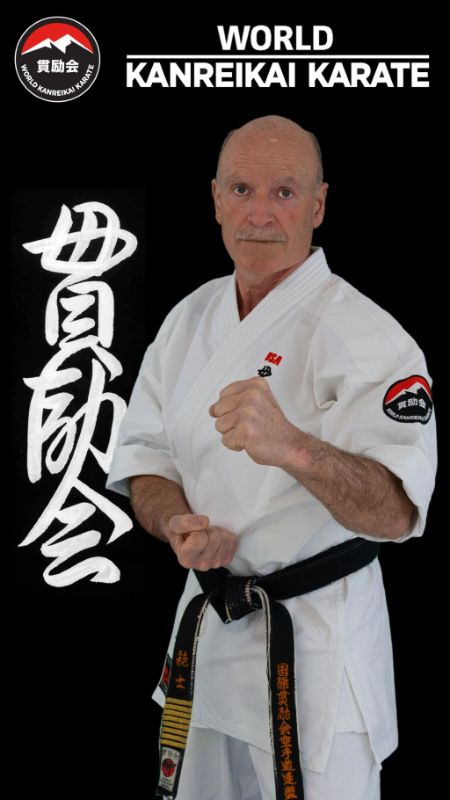
Oirás este término utilizado constantemente por nuestros instructores y alumnos. Abarca los principios fundamentales de nuestro arte marcial y significa paciencia, respeto y aprecio.
- Paciencia
- La práctica del kárate requiere esfuerzo, perseverancia y paciencia. Cada ascenso debe ganarse mediante el trabajo duro y la determinación, sin importar el tiempo que lleve. El kárate no es una «carrera hacia el cinturón negro», sino un esfuerzo constante por mejorar.
- Respeta
- Cada alumno demuestra respeto por sí mismo entrenándose con seriedad y regularidad. El alumno también muestra respeto hacia su instructor y sus compañeros, generando respeto mutuo.
- Agradecimiento
- La palabra Osu! traduce el agradecimiento del alumno hacia su instructor y los demás alumnos; es una forma de decir «gracias». Esta palabra también evoca tu pertenencia al dojo, tu unidad y apoyo.
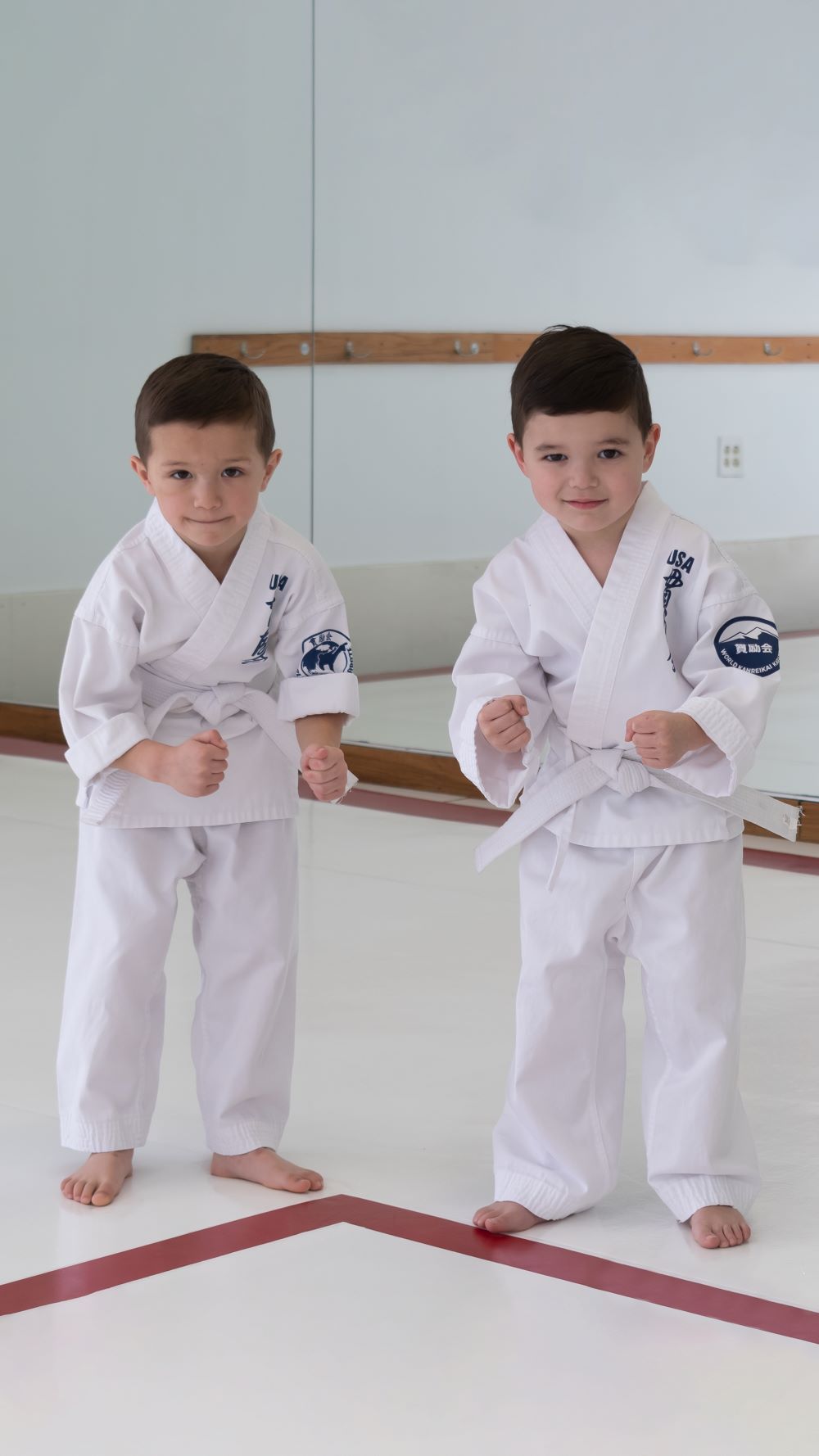
Nuestro DOJO KUN garantiza un entorno respetuoso, seguro y ordenado. Al observar este código, cada alumno contribuye a mantener los valores fundamentales de nuestro arte marcial y optimiza su experiencia como karateka.
- Haz una reverencia y di «¡OSU!» al entrar y salir del dojo
- Expresa paciencia, respeto y aprecio diciendo «¡OSU!».
- Dirígete a nuestro Gran Maestro como «Hanshi»
- Dirígete a los instructores del dojo como «Sensei» o «Senpai».
- Dirigirse a un karateka cinturón negro como «Senpai»
- Responde «¡OSU!» claro y alto cuando te llamen por tu nombre
- Alinearse rápidamente en línea recta cuando el instructor te llame al principio de la clase.
- Estrechar la mano de Hanshi, Shihan, Sensei o Senpai con las dos manos.
- Si llegas tarde, permanece en la entrada del dojo en posición arrodillada (seiza) y espera a que el instructor te invite a ocupar tu lugar en el tatami.
- Cuando te pidan que te retires del tatami, arrodíllate (seiza) junto a la pared del dojo y espera a que el instructor te invite a sentarte (anza); observa en silencio la sesión de entrenamiento
- Pedir permiso al instructor para salir del dojo durante una clase
- Nunca utilices un lenguaje grosero u ofensivo
- Asegúrate de llevar un uniforme limpio (dogi)
- Mantén cortas las uñas de manos y pies
- No lleves zapatos
- No lleves joyas
- No comas, bebas ni mastiques chicle
- No luches sin permiso del instructor
- No utilices técnicas de lucha fuera del dojo, a menos que sea absolutamente necesario para defenderte.
- No utilices material ni armas sin permiso del instructor
- Respetar y utilizar correctamente el equipo durante el entrenamiento
- Si estás resfriado o tienes una enfermedad contagiosa, abstente de entrenar hasta que deje de ser contagiosa.
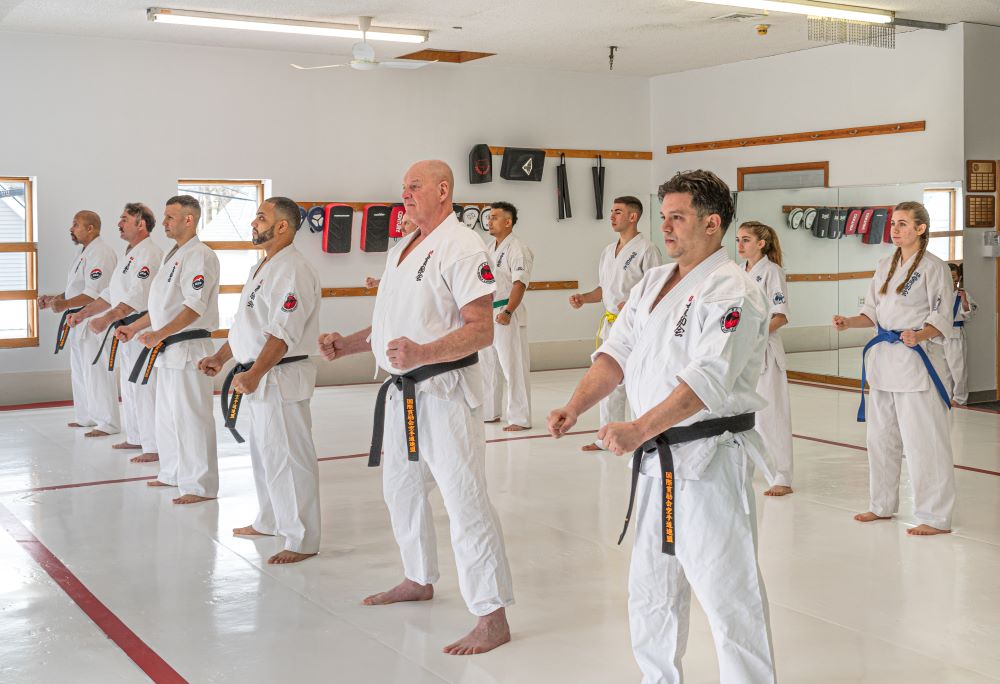
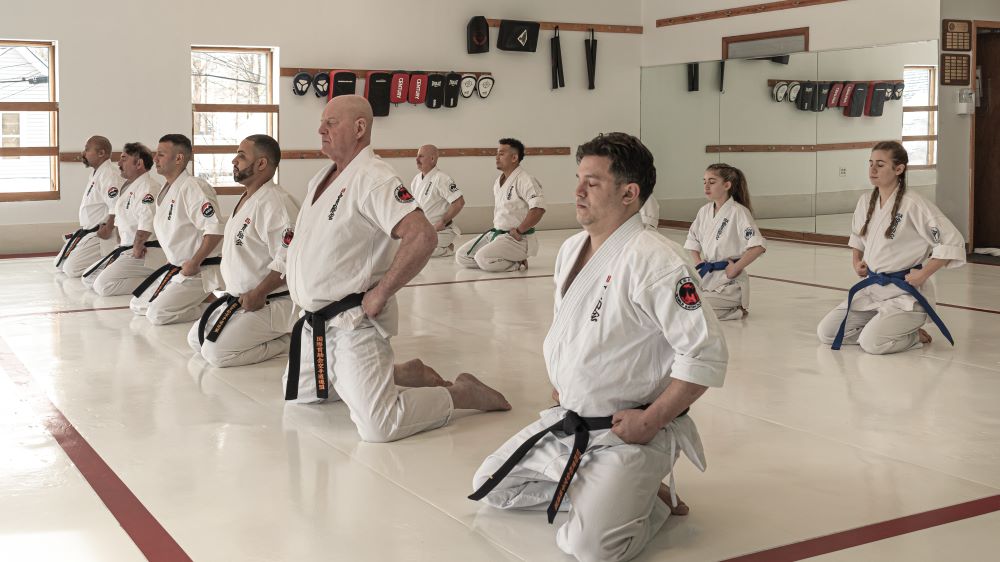
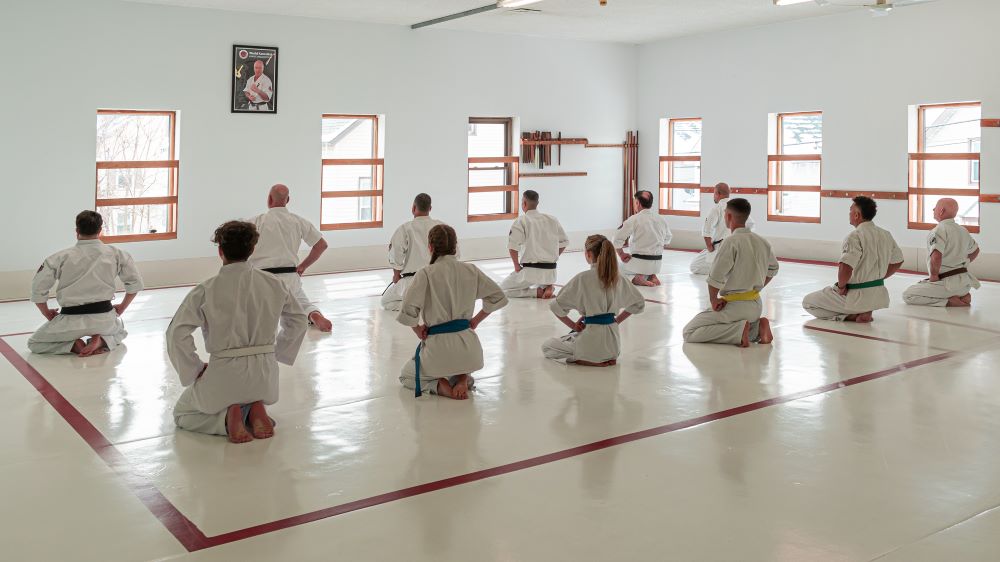

En Kanreikai Karate of Connecticut utilizamos palabras japonesas para contar y describir las técnicas que enseñamos. Los saludos y las directrices básicas también se expresan en japonés a partir del nivel principiante. Comunes a todas las escuelas de kárate Kanreikai del mundo, estas expresiones japonesas establecen un sentimiento de pertenencia y permiten a los alumnos de todas las escuelas Kanreikai visitarse y entrenar juntos.
- Palabras japonesas y su significado
| Anza | posición sentada, relajada, con las piernas cruzadas y la espalda recta |
| Dan | Nivel de cualificación de cinturón negro |
| Dojo | Sala donde se practican artes marciales; escuela de artes marciales |
| Hajime | Comienza |
| Hanshi | Gran Maestre |
| Hidari | Izquierda |
| Hajime | Izquierda |
| Ibuki | Técnica de espiración (una espiración larga seguida de una espiración corta) |
| Kamaete | Posición inicial |
| Karate | Arte marcial japonés que se practica con las manos y los pies desnudos |
| Karateka | Practicante de kárate |
| Kata | Lucha imaginaria |
| Kiai | Grito para concentrar el poder (explosión de poder) |
| Kiai Irete | Movimiento con un grito (Kiai) |
| Kihon Waza | Técnicas básicas |
| Kohai | Alumno menor en relación con su nivel de cualificación (Kyu) |
| Kumite | Lucha |
| Kyu | Nivel de cualificación (de cinturón blanco a punta negra) |
| Mawate | Gira |
| Migi | A la derecha |
| Mokuso | Meditación |
| Naore | Vuelve a la posición inicial |
| Nidan | Segundo dan |
| Obi | Cinturón |
| Otagai | Entre sí |
| Rei | Saluda |
| Sandan | Tercer dan |
| Seiza | Posición de rodillas, puños apretados en las caderas, espalda recta (para el saludo y la meditación) |
| Senpai | Alumno superior en relación con su nivel de cualificación (Kyu); karateka cinturón negro |
| Sensei | Profesor responsable de la escuela |
| Shihan | Maestro |
| Shodan | Primer dan |
| Tatami | Alfombra de entrenamiento |
| Yamei | Para |
| Yoi | Listo |
- Números japoneses
| Ichi | 1 | ||
| Ni | 2 | Niju | 20 |
| San | 3 | Sanju | 30 |
| Chi (Yon) | 4 | Yonju | 40 |
| Ve a | 5 | Goju | 50 |
| Roku | 6 | ||
| Sishi (Nana) | 7 | ||
| Hachi | 8 | ||
| Ku | 9 | ||
| Ju | 10 | Kyaku | 100 |
- Saludos en japonés
- Comienzo de la clase:
- Hanshi Ni Rei – Mokusu – Mokusu Yamei, Shihan (Sensei, Senpai) Ni Rei
Saludo a Hanshi – Meditación – Fin de la meditación, saludo a Shihan (Sensei, Senpai)
(Comienza la formación)
- Hanshi Ni Rei – Mokusu – Mokusu Yamei, Shihan (Sensei, Senpai) Ni Rei
- Fin de la clase:
- Hanshi Ni Rei – Mokusu – Mokusu Yamei, Shihan (Sensei, Senpai) Ni Rei
Saludo a Hanshi – Meditación – Fin de la meditación, saludo a Shihan (Sensei, Senpai)
(Fin de la formación) - Sensei, Senpai Otagai ni Rei
Saludo mutuo entre alumnos, Senpai, Sensei
- Hanshi Ni Rei – Mokusu – Mokusu Yamei, Shihan (Sensei, Senpai) Ni Rei
- Comienzo de la clase:
